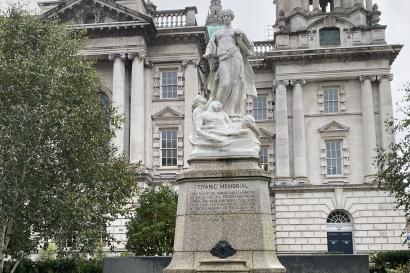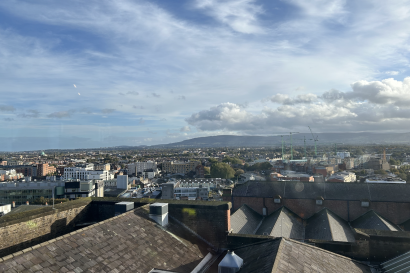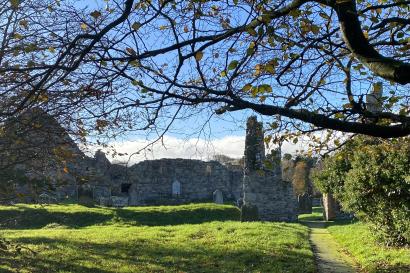Recently, one of my classes took a trip to the Irish National Museum of Archelogy in Dublin. The museum is large and spacious, consisting of multiple rooms where artifacts dating back to the Mesolithic period sit, each waiting to teach students of history about their small but profound contribution to historic Ireland. At first glance the items in the museum appear rather stale and uninteresting. It’s difficult to appreciate a historical item when it's presented with no context—even the golden hoards or silver chalices lose their wow factor after a few go-arounds. But, dig into their stories and they often reveal complex stories that change perceptions of the past.
One such item I researched was a large limestone rock known as the Mullamast Stone. Crafted sometime between 500-600 A.D., it was found on Mullamast hill in Co. Kildare and now rests in “The Treasury” section of the museum, sitting darkly in a corner surrounded by dozens of famous golden Irish treasures. If it weren’t for the electronic banner hanging above it, I likely would’nt have even noticed the stone. It stands about a meter tall, is about 300-400 centimeters across, and weighs several hundred kilograms, making it large enough that it couldn’t have been crafted or moved by just one person. Three of its four sides are decorated from top to bottom with raised spiral ornaments, animal-headed designs, compass-like circles, and faint triangle designs. Its distinctive characteristics place it within the “La Tène” style of Celtic crafting, resembling other stones and metalwork found to be created during the same era in Ireland and abroad. The designs are thought to be associated with pagan beliefs involving fertility, specifically the sun and its restorative powers. It’s thought that this stone would’ve been placed in a ceremonial place and worshipped for its powers.
The stone also bears six deep cut marks on its surface, subtle grooves indicating a powerful tradition. Originally, they were thought to be acts of vandalism or cuts acquired through natural wear and tear, but within the last decade new research suggests that the cuts could be proof of ceremonial “Sword in the Stone” rituals. The sword in the stone mythology dates back to the British tales of King Arthur, and the cuts in the Mullamast Stone are now thought to have been formed during initiations of the ancient Kings of Leinster. During one of these initiations, the King would brandish a large sword back and forth on the stone, acting almost like a signature to solidify their kingship. More importantly than confirming ancient mythology, however, is to consider the Mullamast Stone’s place in Ireland’s historical context.
The arrival of St. Patrick to Ireland in 432 marks the time when Christianity began to take hold of the island. Previously, Celtic Polytheism and Paganism dominated the culture, as evident through the many mythic tales of Kings, Warriors, Gods, and Goddesses. What is significant about the Mullamast Stone, though, is actually what is lacks. That is, the absence of any Christian imagery on a religious stone created over 100 years after the introduction of the Christ in Ireland. What this shows is that Christianity did not completely replace the old religion, that there was a time when the two were practiced alongside one another on the island. Even more significantly is the fact that the stone was not destroyed by the Christians who took possession of it later during the middle ages, suggesting that an appreciation for the old religion and a melding of the two systems of faith occurred despite the decline of paganism in Ireland. Indeed, the Mullamast Stone is one of Ireland’s treasures, a rare item that shows the complex traditions of an ancient religion in the present day, reminding its observers of the old ways of Ireland.

Jacob Muller
<p>I'm a Senior studying English at IUB and will graduate in the Fall. A few things about me: I've played and studied music all my life, I enjoy the company of close friends, and I love being outdoors in the summer. Looking past graduation, I'm planning for a journalism career so this opportunity is great for me.</p>









